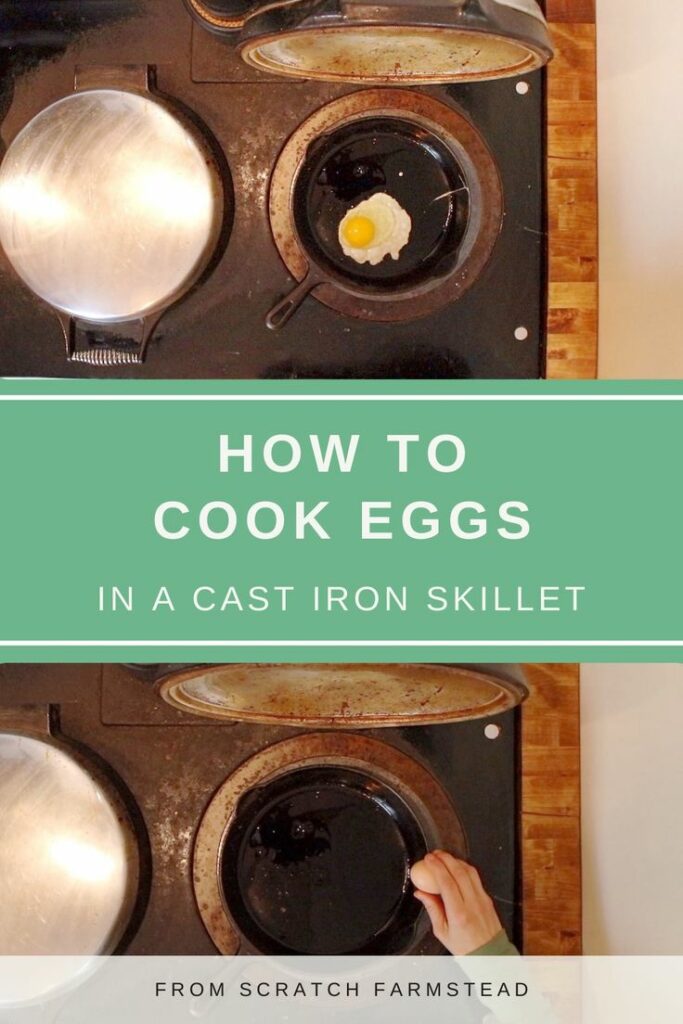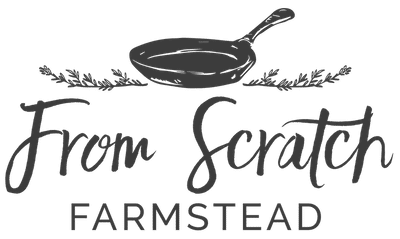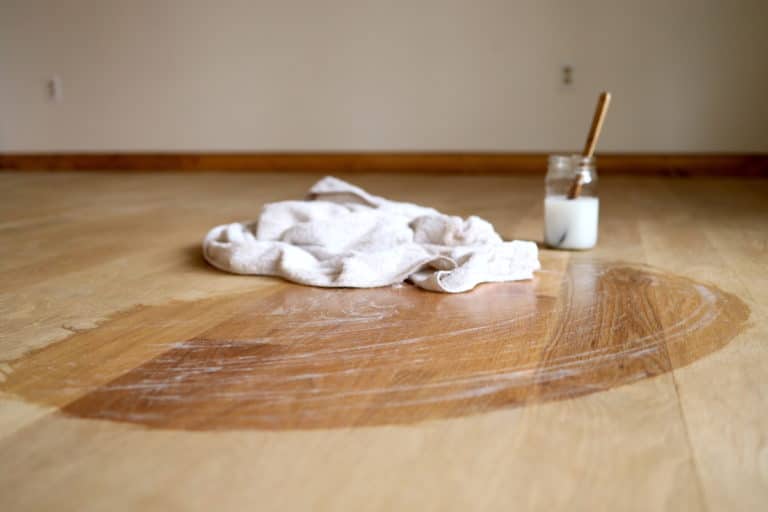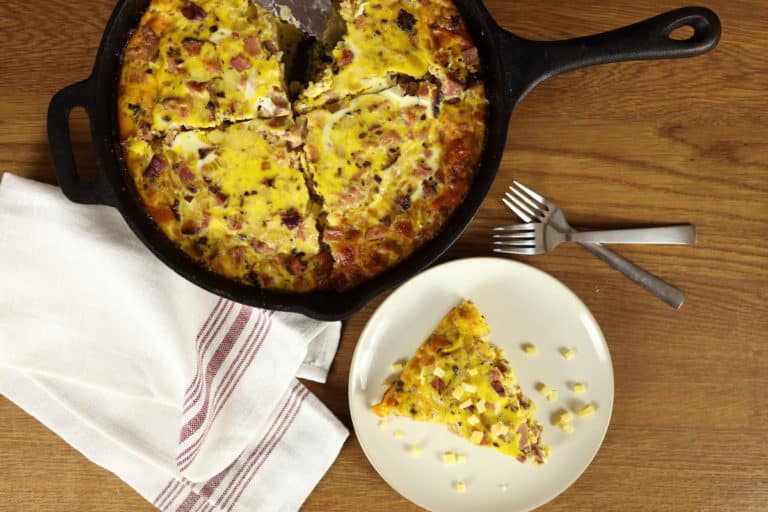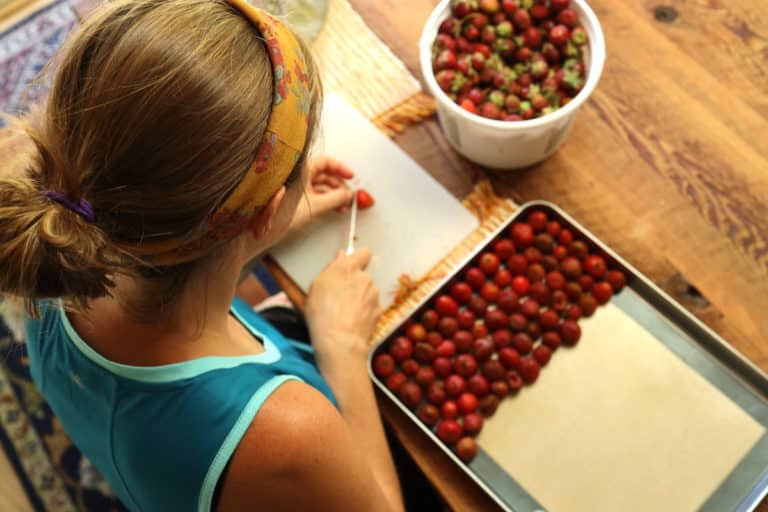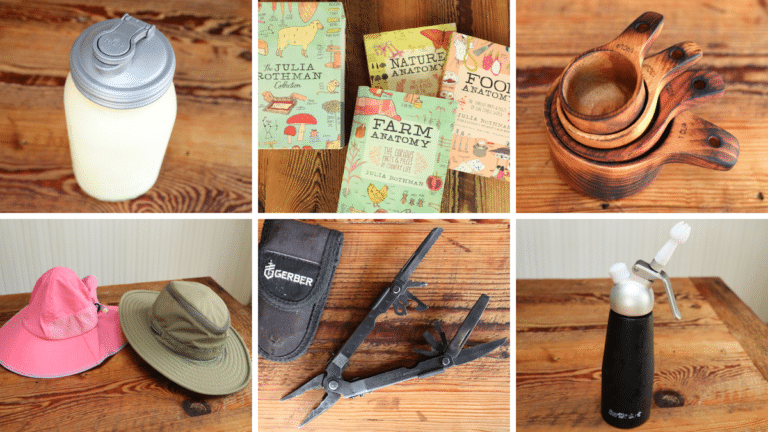How to Cook Eggs in a Cast Iron Skillet
If you are looking for non-toxic, inexpensive, and most importantly, non-stick cookware for your family, look no further. Cooking with cast iron is all about knowing how to use it. But if you do, cooking with cast iron has so many benefits. Dust off your grandma’s old cast iron skillet and learn how to cook the perfect non-stick egg!
How to Use Cast Iron so Nothing Sticks
I had been cooking with cast iron for years, but there were a few things that I just could never get to not stick in cast iron – eggs being a big one. So, every morning, I’d have a separate fry pan to cook my eggs on to avoid having to scrape egg off the bottom of a cast iron pan. However, learning to use my cast iron properly has completely changed our cooking. Now, almost everything we make, eggs included, put our cast iron pans to work every day.
The two critical components for making cast iron non-stick are:
- A well-seasoned pan
- Heat
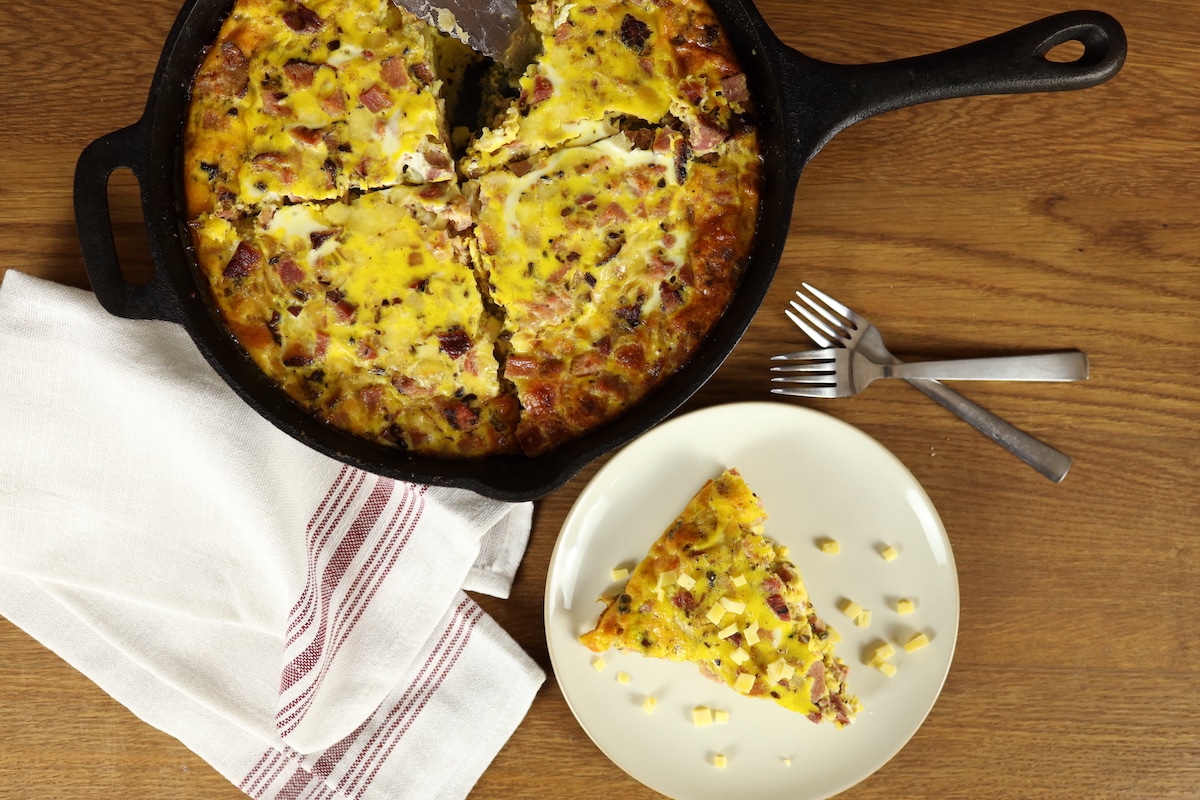
How does seasoning and pre-heating cast iron work?
The first crucial component to make your cast iron non-stick is adding a light layer of fat or oil to your pan. We like to use natural, heat stable fats for this purpose (lard and olive oil are my favorites). Then heat your pan. The pan must be heated slightly above the smoke point of the oil.
Heating a layer of fat on the cast iron pan works through the process of polymerization and carbonization. When a thin layer of oil is applied to the surface of the cast iron, heated and then dried, the oil becomes polymerized (meaning its molecular structure is altered). This is a necessary step because it creates a layer on the pan that isn’t easily removed. Then, once the pan is heated above the smoke point of the oil, it causes a carbon matrix layer to form on the pan’s surface making the pan non-stick.
If these steps of seasoning and pre-heating of the pan aren’t taken, chemical bonds between the food and the pan are formed and cause the food to stick to the pan.
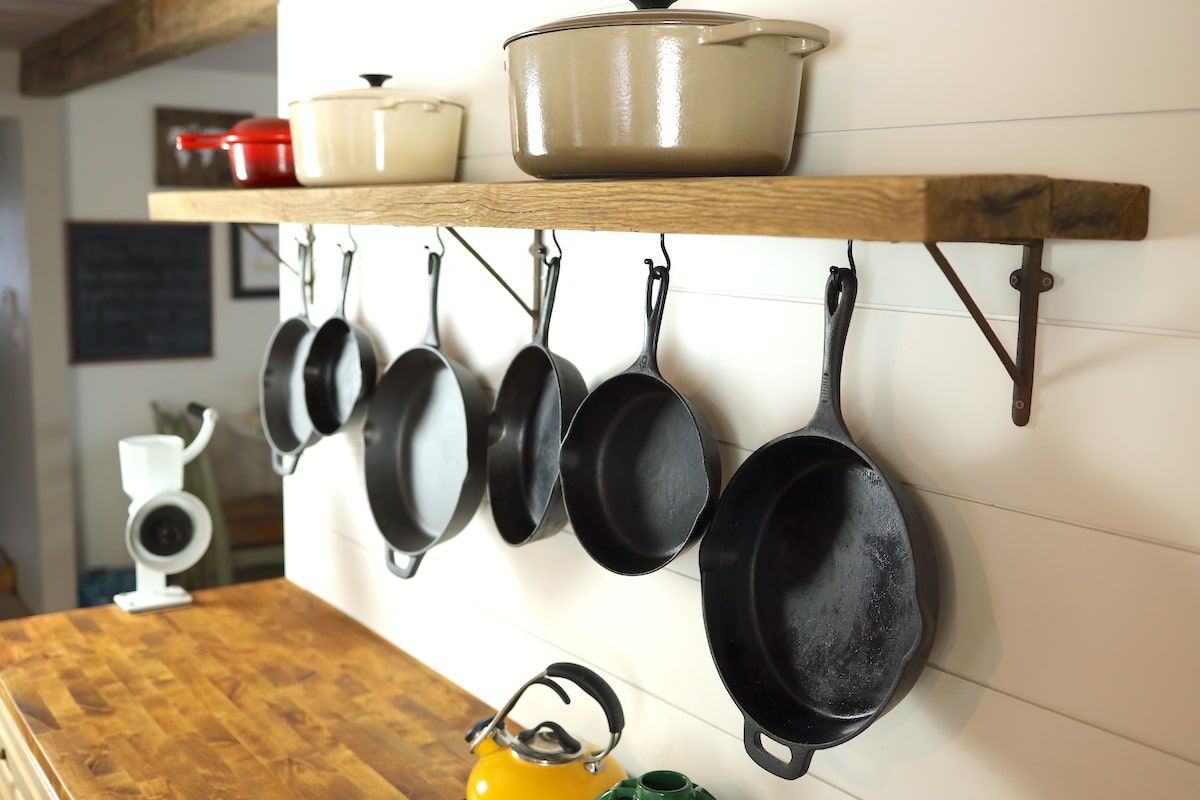
How to cook a non-stick egg on your cast iron skillet?
- Put a small amount of oil or fat on your pan.
- Bring your cast iron pan to a heat slightly above the smoke point of the oil. If you aren’t sure whether or not it’s hot enough, sprinkle a few drops of water on your pan and look for it to sizzle.
- Crack your egg onto your pan and let is sit. Stirring the egg right away can deter the formation of this necessary barrier. Let the egg sit for a minute until you can see that it is cooking. Once cooking, you will see it pull away from the pan making it easy to slide your spatula under and flip as desired.
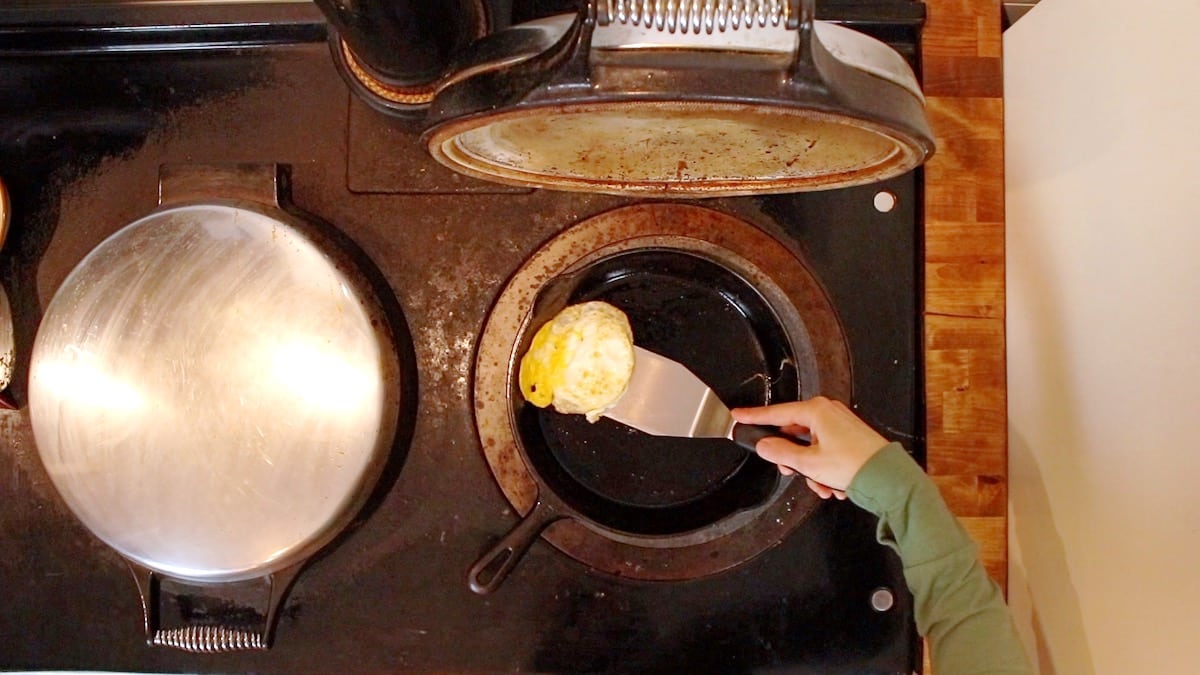
What NOT to cook in cast iron:
Highly acidic foods can deteriorate the seasoning on your pan and therefore should be avoided. These acidic foods include tomatoes and tomato-based products, lemon juice, wine, and vinegar.
History of Cast Iron
There have been findings of cast iron being used in cooking for over 2,000 years. In America, there is some evidence that metal casting was being done prior to colonization. But Europeans brought more advanced metal casting methods to the country.
Cast iron cookware quickly became one of the most common methods for cooking and remained that way until the arrival of more modern materials like aluminum and stainless steel began to replace cast iron in kitchens. However, cast iron has been making a comeback in recent years because of its numerous benefits.
It is interesting to note as well that the process for making cast iron has remained almost unchanged for hundreds of years, meaning that besides the pans level of seasoning with age, the actual modern cast iron pan is not much different than an antique pan.

Benefits of Cooking with Cast Iron
- Cast Iron is great for cooking with any heat source. Stovetop, oven, grill, fire. No need to change pans between stove top and oven and it’s great for serving in allowing you to go directly from cooking to table.
- Improves with age. My favorite cast iron pan is one that I got from my grandma and is at least 80 years old. It is so well seasoned and easy to cook with.
- Durable. Clearly standing the test of time, cast iron is one that can be passed down from generation to generation if properly taken care of.
- Inexpensive. High quality pots and pans can get up there in price. But a quality cast iron pan is very affordable and can last a lifetime. They are also great to snag at thrift stores, garage sales, and second hand for even less!

- Contains a naturally made non-stick coating. As opposed to Teflon and non-stick pans, cast iron is a natural, non-toxic alternative.
- It retains heat safely. The Teflon coating on nonstock cookware breaks down when heated to high temperatures, which can flake off and omit carcinogenic toxins into your food and the air. Cast iron can get extremely hot and remain safe giving your steak a perfect sear.
Where to find cast iron?
As I mentioned above, the process used to make these pans has not changed much over the last one to two hundred years. That being said, modern cast iron pans are not that different than older pans. In my opinion, cast iron is one of those things where newer is not always better. They just get better with age.
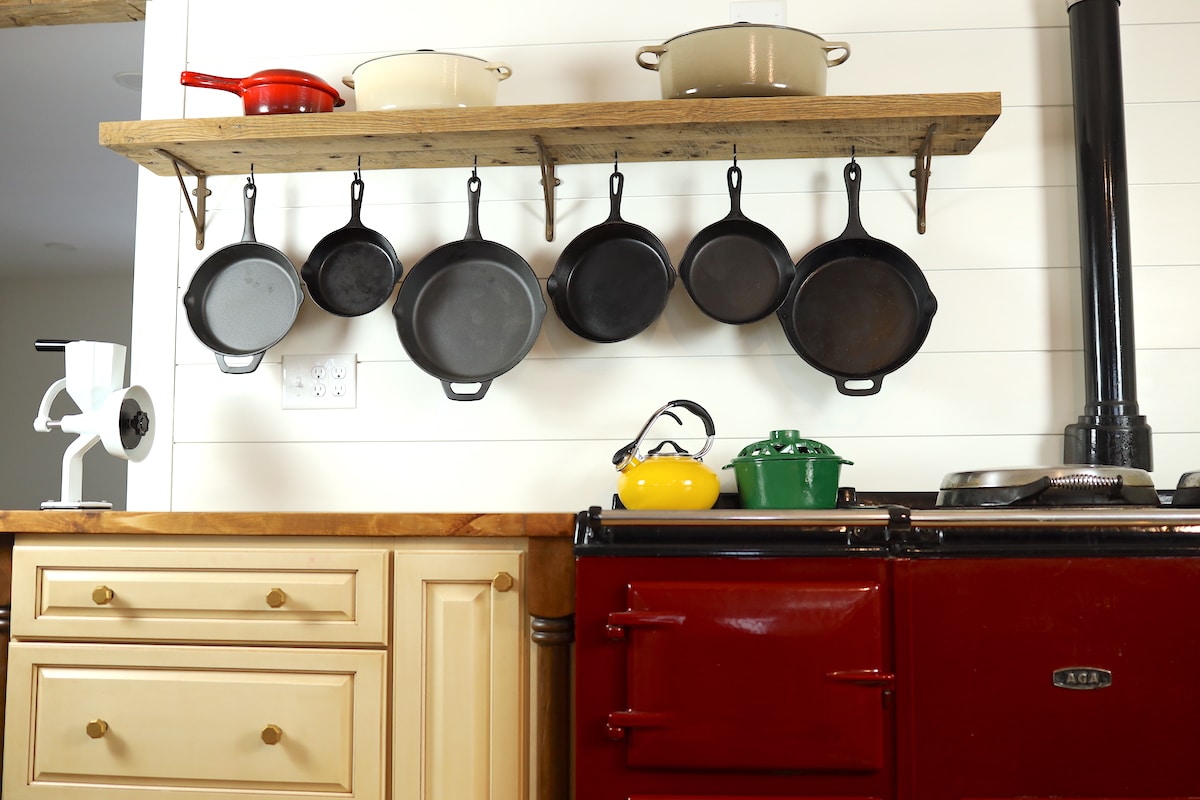
We own and use cast iron pans that were both brand new as well as passed down from previous generations or purchased used. They both work well but my favorite pans are those older pans that are so well seasoned and feel like you are cooking with your great grandma in the kitchen with you. These are the new cast iron pans that we own. Or, garage sales, thrift stores, consignment shops, and other second-hand sources are all great places to look to begin or add to your cast iron collection.
Some of the above links are affiliate links. This means we earn a small commission on qualifying purchases at no cost to you. We are so appreciative of your support!
To give it a try, here are a few of our favorite recipes using our cast iron pan:
Gluten Free Potato Crusted Quiche
Homestead Gluten-Free Cornbread
Deep Dish Sourdough Cast Iron Pizza
Apple Sweet Potato Hash with Greens & Sausage
Pin it for later!
